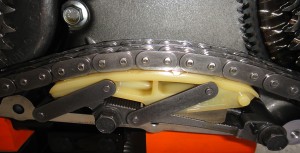A few days ago I was swapping email with my friend Paul about laptop batteries. He had some concerns about runtime and stuff. I thought that parts of our conversation seemed like a good candidate for this space and he agreed. Yeah, there are plenty of tip lists and whatnot out there, but what follows is based on my actual personal experiences.
[…] how much run time do you (or should I) expect? Seems to me like I’m getting 10-15 minutes, always running plugged in, and that can’t be helping the battery to take a deeper charge.
My laptops (now old, creaky P4s with conventional hard drives, since we’ve all moved back to fast, powerful desktops) get about an hour or so of work on the network, maybe an hour forty-five backing off the screen brightness with mostly local work. My SSD-equipped netbook OTOH goes for 5-10 hours, depending. Once, on a bus back from DC, I had the netbook running a LAMP server virtualized under VirtualBox, doing Web development to while away the hours. A single charge lasted the whole trip back to Jersey! Oh, yeah, and a seatmate’s iPhone died on the way so I let him plug into a USB port to charge up. (Bonus: I got a bit of ‘net access!) So, battery life can vary greatly.
You’re right about not liking to be constantly charging. But LiIon batteries are kind of predictable once you get to know them.
Don’t subject them to temperature extremes, high ambient heat is especially bad so don’t let ’em sit in the sun. Don’t let them fully discharge. In practice, your box will shut down before full discharge becomes a problem. But don’t forget to charge a spent one before long-term storage. A battery on the shelf will discharge slowly, a battery in a powered-off laptop will discharge faster. So, to maximize life remove it when it’s not being used for extended periods.
The LiIon chemistry doesn’t wear out (like lead-acid) so much as it develops an ever-increasing internal resistance over time. You’ll notice that a new battery charges fast and lasts a long time. After a while it takes longer to acquire a full charge that doesn’t last quite as long. At end-of-life you can charge it all day and it won’t show full, while delivering only a few minutes of use (if that). The charging circuitry can only push so hard, and as the battery’s internal resistance climbs it has to work harder and harder to deliver fewer electrons. You end up getting some number of useful cycles out of a battery and that’s that. It makes sense, then, to use the battery until depleted, charge it, set it on the shelf for next use. Nobody really uses ’em that way, though…
Keep ’em in the laptop, use it on AC? Not ideal, the charge circuitry will keep cycling them near the top of charge, you actually tend to wear out the battery quicker that way – but you won’t notice it until you’re away from AC and actually need that charge. Using your laptop on AC most of the time? Take the battery out. The charge circuitry will notice and stop charging the empty hole, and the whole box will run cooler. ‘Course, you don’t get the benefit of a built-in UPS, but life’s full of trade-offs.
Finally, a safety tip. LiIon chemistry is inherently quite unstable. Without the active circuitry within the battery itself it’s prone to problems like thermal runaway – a nice term for explosions or catching fire. If you drop one, best to stand there looking dopey watching it for a few minutes. Look for signs of stress – heat, bulging, etc. – before putting it away. Is a dropped phone going to explode every time? Not by a long shot. But you never know. Sony, HP, Dell, virtually all of the big players have had massive battery recalls. There’s been plenty of property damage and injuries, but only the most spectacular ones make the news.
I haven’t actually timed it, but it seems awfully, awfully short.
Conserve. Use the power-saving power profile. Dim the screen’s backlight. Use a simple blank screen saver. Set short sleep and hibernate trigger times. Routinely sleep or hibernate the box when taking phone calls, hitting the can, making coffee, etc. Run fewer simultaneous applications and trim background processes. Save processor-intensive work for when you’ve got AC. You can probably double your runtime, with practice. Most people can.
Finally, keep the system’s monitoring and charging subsystems ‘in tune’ by calibrating according to the manufacturer’s guidelines, taking your usage patterns into consideration. Usually, calibration amounts to using the battery until it’s depleted followed by giving it a full, uninterrupted charge. That way the system has a better idea of the battery’s condition at any given time and can more effectively manage the charging circuitry. It’s that internal resistance increasing over time thing again.







